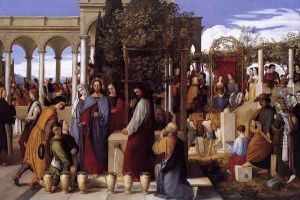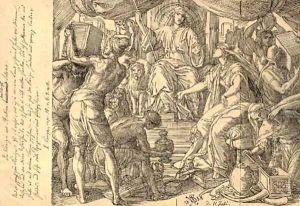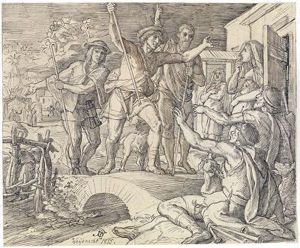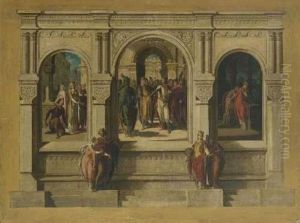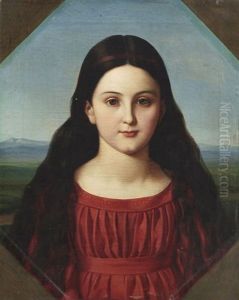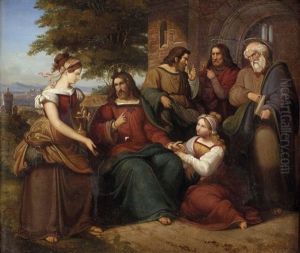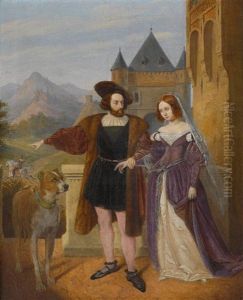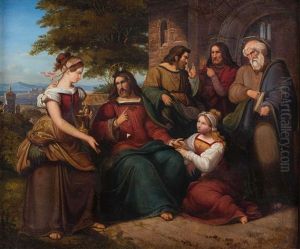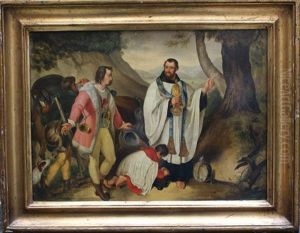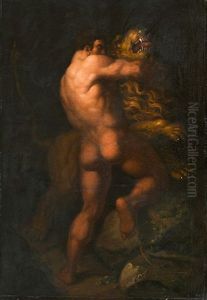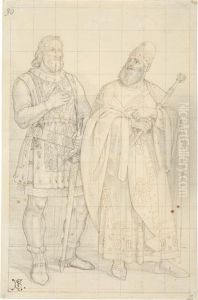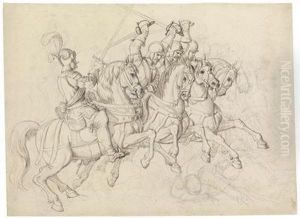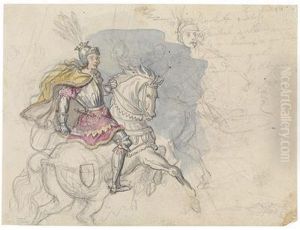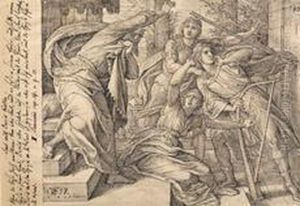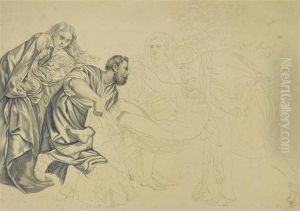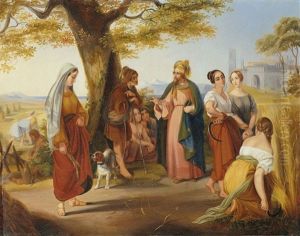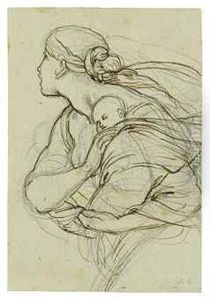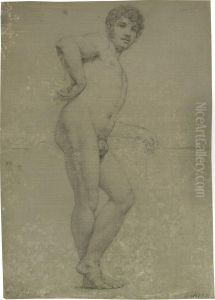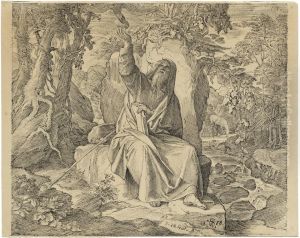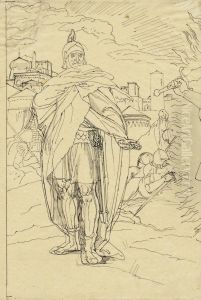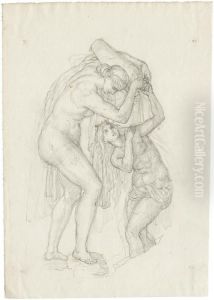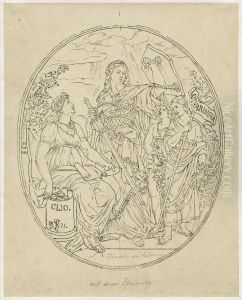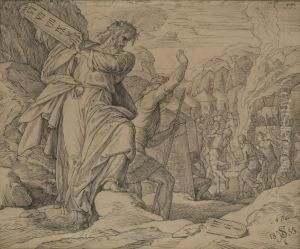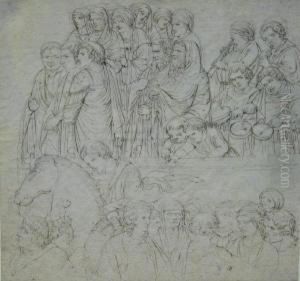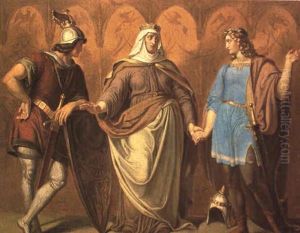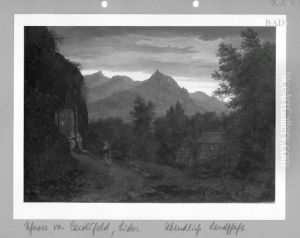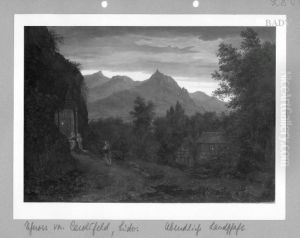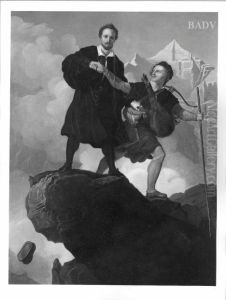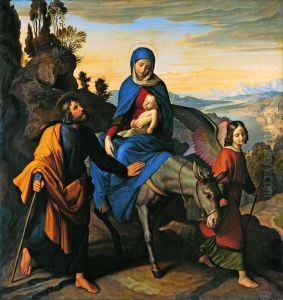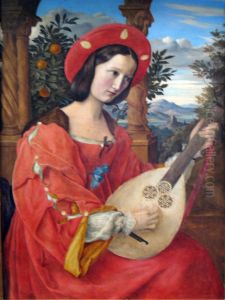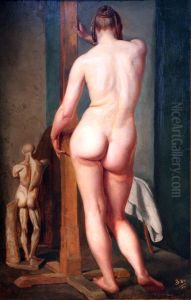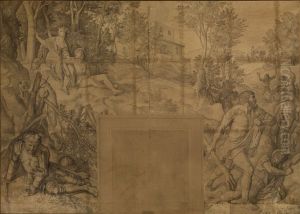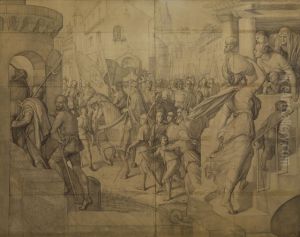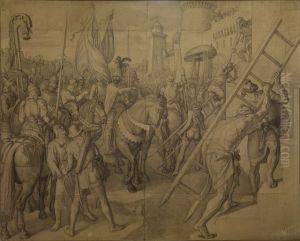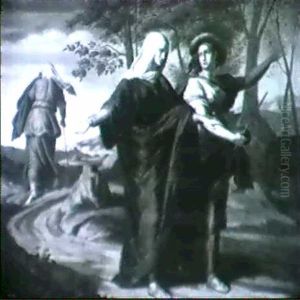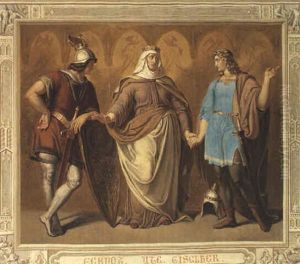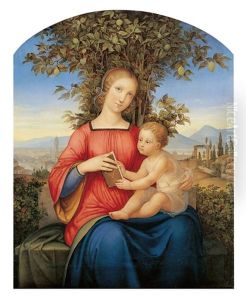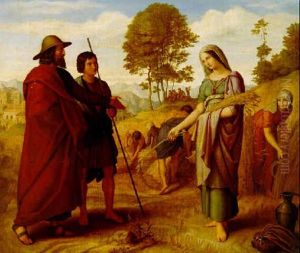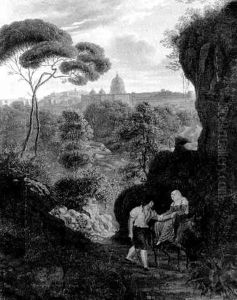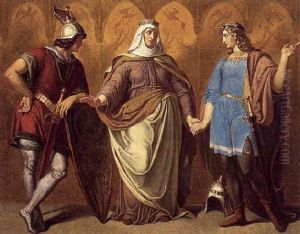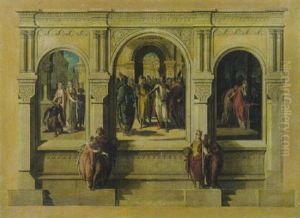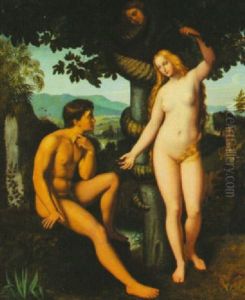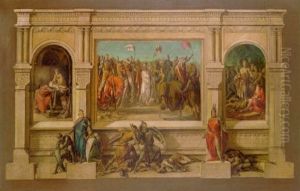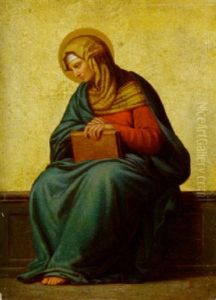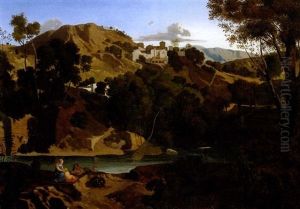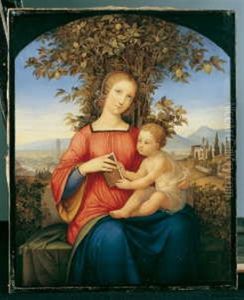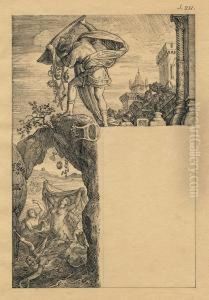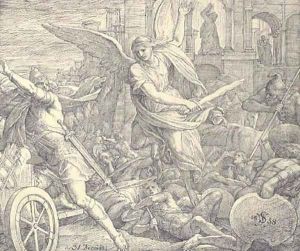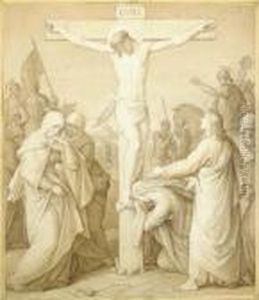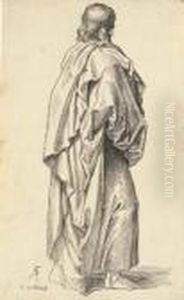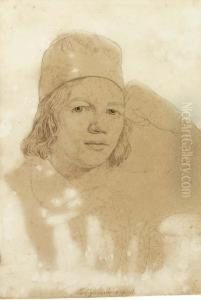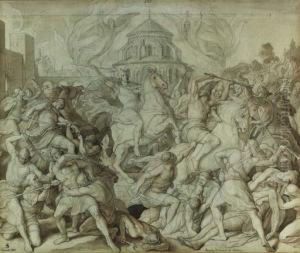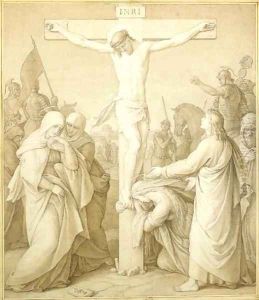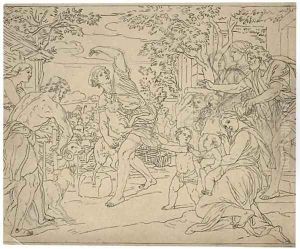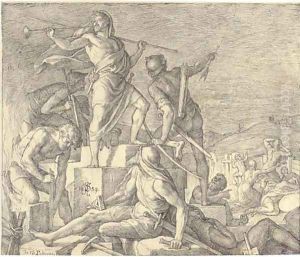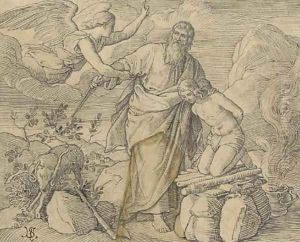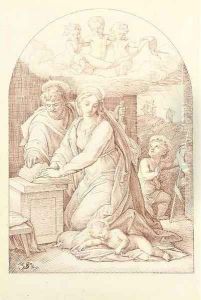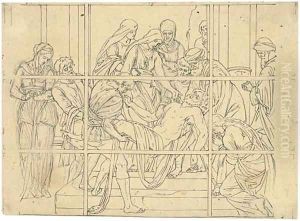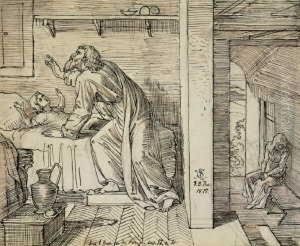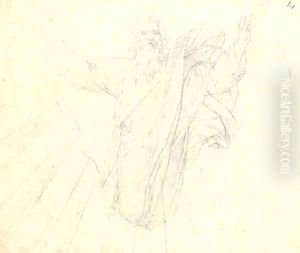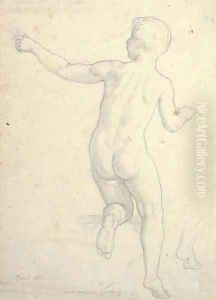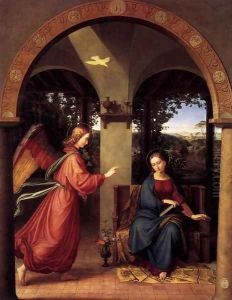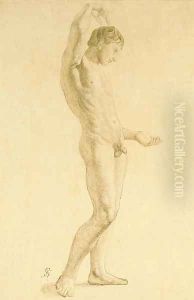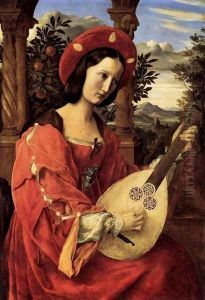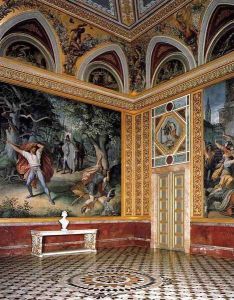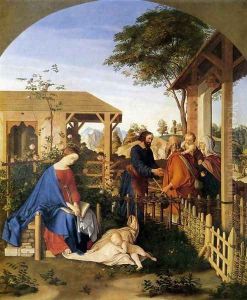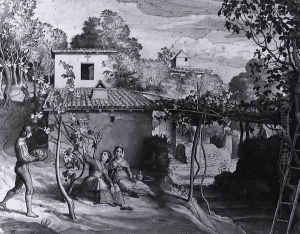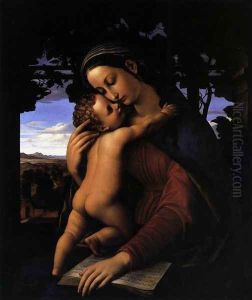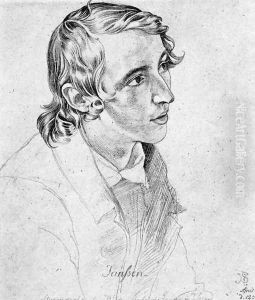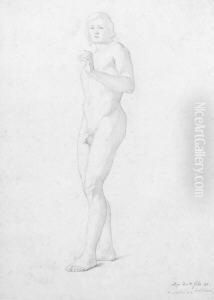Julius Schnorr Von Carolsfeld Paintings
Julius Schnorr von Carolsfeld was a German painter and designer, known for his influence on the Nazarene movement and his contributions to Romanticism in art. Born on March 26, 1794, in Leipzig, Germany, he was part of a family of artists; his father, Johann Veit Schnorr, was a draftsman and engraver, and his brother, Ludwig Ferdinand, was also a painter.
Julius began his artistic education at the Vienna Academy under the guidance of Heinrich Füger. His early work was shaped by the classical and historical subjects popular at the time. In 1815, he became one of the founding members of the Brotherhood of Saint Luke, commonly known as the Nazarenes, a group of like-minded artists who aimed to revive the spirituality and sincerity found in medieval and early Renaissance art. The Nazarenes rejected the formalism and academic standards of the time, and Schnorr von Carolsfeld's work reflected this through its focus on biblical and religious themes, executed with simplicity and a focus on linearity.
In 1818, Schnorr von Carolsfeld moved to Rome, which was a center for the Nazarene movement, and where he collaborated with other artists of the group on various projects, including frescoes for the Casa Bartholdy and the Casino Massimo. These works were characterized by their use of fresco techniques and were inspired by the works of Italian Renaissance masters.
In 1825, Schnorr von Carolsfeld returned to Germany and settled in Munich, where he received significant commissions from King Ludwig I of Bavaria. One of his most notable projects was a series of frescoes for the King's new residence, the Residenz. He also worked on designs for stained glass windows for St. Paul's Church in Frankfurt and for the Cologne Cathedral, reflecting his versatility as an artist.
Schnorr von Carolsfeld's style evolved over the years, and he began to incorporate more elements of the Romantic movement, which was gaining prominence at the time. His later works often featured dramatic narratives and emotional intensity, as seen in his illustrations for a Bible published in 1860, which are among his best-known works.
Julius Schnorr von Carolsfeld continued to work and teach until his death on May 24, 1872, in Dresden. He left behind a legacy as a key figure of the German Romantic movement and the Nazarene brotherhood, influencing a generation of artists who sought to infuse their work with moral and spiritual depth.
